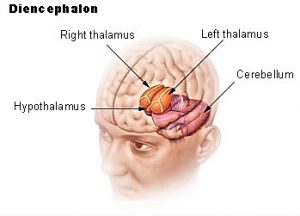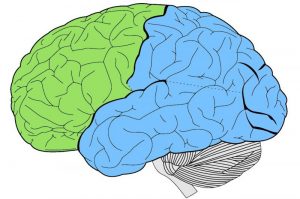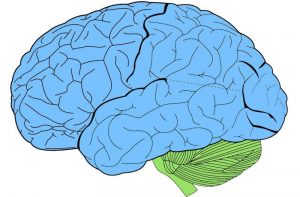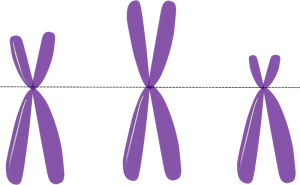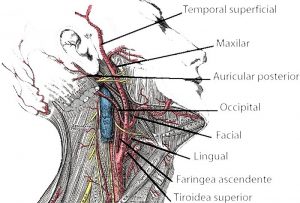Holoprosencephaly
Holoprosencephaly (HPE) corresponds to a severe and complex brain congenital malformation associated with obvious and particular facial anomalies such as hypotelorism, cyclopia, ethmocephaly, cleft lip, etc.

Field
Medical genetics
Definition
It is a brain birth defect that is also related to facial and skull malformations. This malformation that occurs during the first weeks of fetal gestation, is characterized by a lack of division of the front of the brain which prevents the proper development of the cerebral hemispheres (right and left) and the lateral ventricles (cavities of the brain in which the cerebrospinal fluid is found).
Causes of the holoprosencephaly
No particular cause has been identified for Holoprosencephaly. It is said to be of teratogenic origin, in other words, that a substance or medicine produces a congenital defect during embryonic development. This abnormality has also been associated with alcohol consumption and mother’s diabetes because these conditions affect the midline cells of craniofacial structures.
Some babies will have an identifiable genetic cause. About one-third of children born with this disease have an abnormality in the chromosomes that contain genetic material (DNA).
Other risk factors are related to infections during pregnancy, such as syphilis, toxoplasmosis, herpes, and rubella. Similarly, the use of substances such as aspirin, lithium, anticonvulsants and hormones may influence the development of this malformation.
Recent studies show the possibility that hypolipemic of the statin class may be involved in the appearance of the disease.
Diagnosis
Since it is associated with only a few months of life, a prenatal diagnosis could be very useful for making decisions about pregnancy’s development. This anomaly could be linked to different syndromes that affect different organism’s systems. In this sense, it is crucial that the specific nature of the disease be identified at clinical level.
It can be detected through physical examination; however, magnetic resonance imaging is required to give a definitive diagnosis. Genetic testing is also necessary because almost half of all cases involve chromosomal abnormalities, particularly those that alter chromosome 13.
Prenatal diagnosis is simpler in allobar or semilobar holoprosencephaly and can be performed through morphological ultrasounds from the tenth week of pregnancy. On the other hand, in the case of lobar holoprosencephaly, its diagnosis tends to be more difficult and delayed. A medical interruption of pregnancy is accepted in most cases of holoprosencephaly.
Treatment of the holoprosencephaly
There is no curative treatment. Indeed, in severe cases, it is important to consider medical limitations as the disease could be fatal. On the other hand, in mild cases, treatment can be multidisciplinary and cover different medical specialties such as neurology, endocrinology, physiotherapy, among others.
In these cases, treatments are palliative and adapted to the symptoms present. For example, medications may be used to prevent spasticity, sleeping difficulties or problems with the esophageal sphincter.
Types of holoprosencephaly
There are different types of holoprosencephaly depending on the extent of the malformation. This malformation leads to more or less important anomalies in the face. Intellectual retardation is often present. Patients suffering from the most severe forms live only a few months.
Alobar Holoprosencephaly
This is the most severe form of holoprosencephaly, and it is characterized by an abnormality in prosencephalization. As a consequence, there is a fusion of the two cerebral hemispheres and a single centrally located ventricle. Similarly, the brain tends to be smaller than normal size and the thalamus are fused.
Signs such as anophthalmia, cyclopia, severe mental retardation, lips fissures, cleft lip, epileptic seizures and microcephaly are present. Indeed, on a clinical level, patients with allobar holoprosencephaly present more evident facial malformations and the severity of the disease may even be so high that miscarriage or death in the uterus occurs.
Semilobar holoprosencephaly
In this case, the prosencealization is interrupted which allows the hemispheres fusion to merge at the previous level. The hemispheres are partially separated. As there is an incomplete fissure in the inter hemispheric zone, the occipital lobes and horns present only slight anomalies. This form of the disease is characterized by nasal malformations and mental retardation of varying degree.
Lobar holoprosencephaly
This is the least severe of the classical forms of Holoprosencephaly with the separation of the right and left hemispheres and the lateral ventricles, and with frontal lobe fusion mainly anterior and ventral.
Lobar holoprosencephaly is associated with slight or absent facial malformations or intellectual abilities that can range from mild mental retardation to a normal state. In addition, there may be some anomaly in the corpus callosum.
How to cite this article?
Briceño V., Gabriela. (2019). Holoprosencephaly. Recovered on 24 February, 2024, de Euston96: https://www.euston96.com/en/holoprosencephaly/



